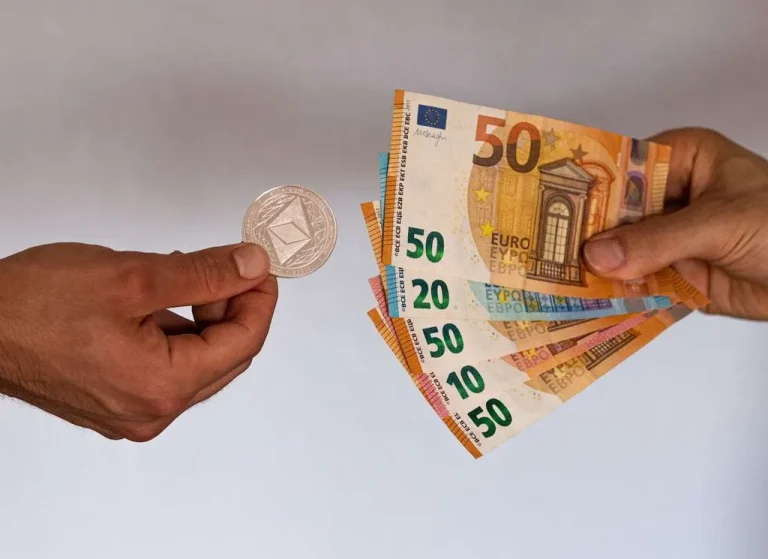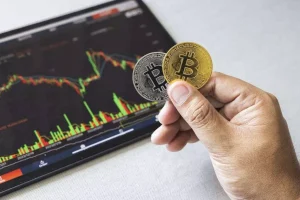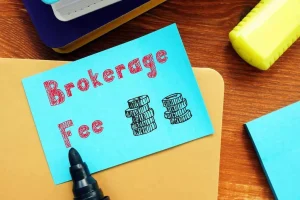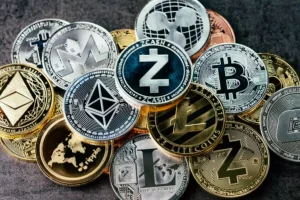After the Federal Reserve’s interest rate cut, risky digital assets have become the main focus of attention. Due to its high volatility, the market has seen a slow capital inflow. However, the recent political decisions may prompt enthusiasts to consider finding a trusted fiat to crypto exchange to invest in decentralized currencies. Many such platforms enable participants to convert funds and withdraw them to a bank account. In this guide, we will analyze the inner workings of exchanges and consider what makes decentralized assets different from traditional currencies.
What Does Fiat Money Mean?
The underlying importance of fiduciary money in crypto markets is hard to underestimate. As fiat money is not backed by commodities, governments regulate its value. Central banks authorize it to be used legally as a means of exchange.
There are two separate processes that every trader should be aware of:
- Off-ramp: Such operations enable users to exchange decentralized assets into products and services.
- On-ramp: The term refers to buying tokens with fiat.
Despite the growing adoption of distributed ledger technology, traditional money maintains its relevance. As the crypto industry gains prominence and becomes an integral part of the global economy, fiat gives investors a sense of safety and provides the desired liquidity.


Turnkey Brokerage Solution For Your Business
Get the most profitable fully licensed fx/crypto brokerage software or ready-to-operate business in 48 hours. Best-in-class web & mobile trading platforms, sales-driven CRM, full integration with MT4/5, and 150+ payment providers.
Fiat vs Crypto: Key Differences and Similarities
Virtual currencies were designed to expedite transactions, reduce fees, and facilitate cross-border crypto trading. They serve as an attractive alternative to fiat, but they are quite distinct. Below, we have analyzed the main things one needs to consider when choosing between them:
- Format: While fiat comes in two forms, cash and digital money, it may be a better option for those looking for flexibility. It is suitable for those who want to easily convert assets without fearing repercussions. On the contrary, tokens are digital. They are available on blockchain-based services. Central bank digital currencies (CBDC) are similar to cryptos, but they are controlled by authorities. They are expected to be widely used and bring the desired stability to the market.
- Regulation: Fiat is issued by governments and functions as legal tender. Such currencies are printed by central banks and are distributed via commercial financial organizations. Cryptocurrencies are based on a decentralized ledger and are controlled by users who hold tokens on the blockchain. Community members participate in governance processes. Virtual currencies are easier to access, as anyone can purchase them without a third party and transfer the assets into a crypto wallet for safe storage. AML KYC policies are designed to prevent the illegal use of digital currencies.
- Volatility: Fiat is more stable than decentralized finances, so traders should be careful when exchanging these assets to avoid money loss. The crypto market can be easily impacted by news, election cycles, and other factors that instantly reflect on the prices. Even deflationary tokens with limited supply are prone to sudden price changes. While fiat assets are inflationary, regulators control the printing process.
- Security: Both types of currencies can be audited, but cryptos are susceptible to specific breaches. While decentralized ledgers are built to withstand external attacks, bridges between parts of blockchain are vulnerable. Holders of fiat should take steps to protect themselves from scams and forgeries.
Owners of traditional money use multiple safe storage options. Many investors want to convert crypto to fiat as soon as they take profits. Crypto holders utilize hot and cold storage to access funds. Bank payments are taking longer to process, while digital currencies are exchanged almost instantly. Nevertheless, both types of assets are used to purchase products and services, which explains their unwavering relevance.
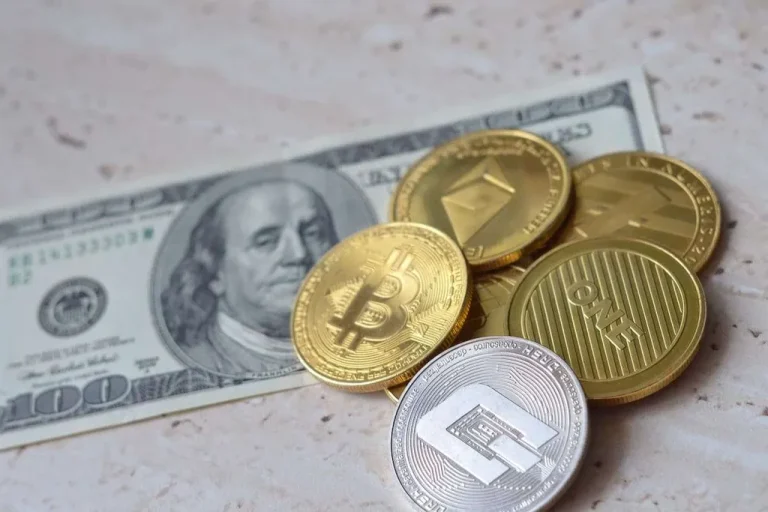
How to Exchange Crypto to Fiat
Withdrawing money to a bank account requires a user to convert decentralized assets into a national currency. After selecting a reputable platform that supports a specific token, traders need to place a sell order and choose between a market and limit price. When the order gets filled, a user receives fiat and withdraws it to a bank account.
There are multiple methods of converting these types of assets:
- Online exchanges: Marketplaces enable users to conduct various operations with crypto.
- Peer-to-peer (P2P) platforms: Buyers and sellers trade assets directly, without using intermediaries, which allows them to enjoy top-level privacy and utilize preferable payment methods.
- ATMs: Using specific ATMs, investors purchase and sell decentralized assets with fiat.
- Prepaid cards: Crypto debit cards enable users to automatically convert tokens into a stable currency and purchase products.
While many platforms enable users to trade with fiat pairs, the availability of this option depends on the country and regulatory requirements. Many services allow members to utilize legal tender only to buy crypto.
Understanding Fiat-to-Crypto Exchanges
Such platforms enable users to convert traditional money into decentralized assets serving as intermediaries between financial markets. Depending on the service, members may be able to directly deposit specific fiat currencies and later withdraw funds to their wallets or bank accounts.
Blockchain technology symbolizes the emergence of the Web 3.0 based on the principle of instant access to digital means of payment. A fiat to crypto exchange enables users to invest in virtual money and tokenized assets to protect capital from inflation.
While novice users may find it challenging to understand the principles of web-based services, experienced members who have already mastered the ropes know how to leverage the built-in tools to maximize gains.
Exchanges cannot process transactions involving fiat without establishing partnerships with banks. Services that fail to meet the requirements often face liquidity problems. As major financial institutions demonstrated an interest in the cryptocurrency market, their support guarantees that traders can safely place orders to purchase the most promising decentralized assets with their hard-earned money.
How Does a Fiat-to-Crypto Exchange Work?
Due to the proliferation of web-based services allowing users to convert assets, it becomes crucial to select the most reliable platform. Making the right choice requires finding a reputable exchange with robust security options. Such services strictly adhere to AML policies and implement extra protection measures, including 2FA.
Exchanges support an extensive choice of currencies catering to the needs of domestic and international investors. Even though they charge fees, loyal members may be offered discounts, which increases potential yields.
The functionality of such marketplaces is quite streamlined; investors should be aware of their inner workings to purchase tokens without any restrictions. They should take the following steps:
- Create and verify an account: Users may need to go through KYC procedures and provide personal information.
- Transfer fiat: Depending on a platform, members will have access to different options allowing them to deposit money instantly using bank transfers and other methods.
- Place an order: Buying crypto involves selecting a trading pair, deciding on the amount, and confirming the transaction. After the finalization of an operation, a buyer can either utilize an in-built wallet or use cold storage options, which are considered more secure, making them best suited for long-time holders.
When markets are stable, buyers do not have to worry about liquidity. However, panic selling may lead to difficulties in withdrawing fiat. Using trusted services, investors avoid such situations and keep their money safe. Reliable platforms facilitate fiat to crypto exchange, making it easier to protect earnings.
